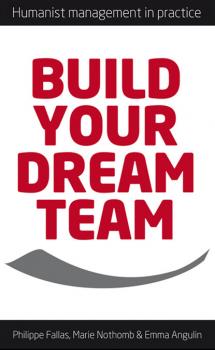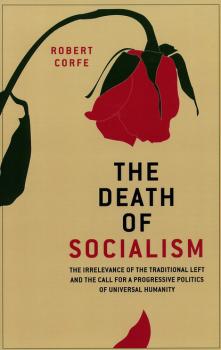MREADZ.COM - много разных книг на любой вкус
Скачивание или чтение онлайн электронных книг.Black Rage Confronts the Law
In 1971, Paul Harris pioneered the modern version of the black rage defense when he successfully defended a young black man charged with armed bank robbery. Dubbed one of the most novel criminal defenses in American history by Vanity Fair, the black rage defense is enormously controversial, frequently dismissed as irresponsible, nothing less than a harbinger of anarchy. Consider the firestorm of protest that resulted when the defense for Colin Ferguson, the gunman who murdered numerous passengers on a New York commuter train, claimed it was considering a black rage defense. In this thought-provoking book, Harris traces the origins of the black rage defense back through American history, recreating numerous dramatic trials along the way. For example, he recounts in vivid detail how Clarence Darrow, defense attorney in the famous Scopes Monkey trial, first introduced the notion of an environmental hardship defense in 1925 while defending a black family who shot into a drunken white mob that had encircled their home. Emphasizing that the black rage defense must be enlisted responsibly and selectively, Harris skillfully distinguishes between applying an environmental defense and simply blaming society, in the abstract, for individual crimes. If Ferguson had invoked such a defense, in Harris's words, it would have sent a superficial, wrong-headed, blame-everything-on-racism message. Careful not to succumb to easy generalizations, Harris also addresses the possibilities of a white rage defense and the more recent phenomenon of cultural defenses. He illustrates how a person's environment can, and does, affect his or her life and actions, how even the most rational person can become criminally deranged, when bludgeoned into hopelessness by exploitation, racism, and relentless poverty.
Bisexuality and the Challenge to Lesbian Politics
The subject of bisexuality continues to divide the lesbian and gay community. At pride marches, in films such as Go Fish, at academic conferences, the role and status of bisexuals is hotly contested. Within lesbian communities, formed to support lesbians in a patriarchal and heterosexist society, bisexual women are often perceived as a threat or as a political weakness. Bisexual women feel that they are regarded with suspicion and distrust, if not openly scorned. Drawing on her research with over 400 bisexual and lesbian women, surveying the treatment of bisexuality in the lesbian and gay press, and examining the recent growth of a self-consciously political bisexual movement, Paula Rust addresses a range of questions pertaining to the political and social relationships between lesbians and bisexual women. By tracing the roots of the controversy over bisexuality among lesbians back to the early lesbian feminist debates of the 1970s, Rust argues that those debates created the circumstances in which bisexuality became an inevitable challenge to lesbian politics. She also traces it forward, predicting the future of sexual politics.
Bird-Self Accumulated
"When BooBoo stabs Morris Boyle I am reading a news magazine that someone has smuggled into the wing." Thus, the protagonist of this novella introduces us to prison, one of the several worlds he inhabits, worlds most of us would rather ignore but which inexorably, through what we see and hear and read and live on uncountable American streets, has become the one world we can no longer avoid. It seduces us with the voice of drugs and violence. Of the disenfranchised. Of those both at once outside and standing within the center of what no longer holds. It informs us of who we are today.
American Cool
Cool. The concept has distinctly American qualities and it permeates almost every aspect of contemporary American culture. From Kool cigarettes and the Peanuts cartoon's Joe Cool to West Side Story (Keep cool, boy.) and urban slang (Be cool. Chill out.), the idea of cool, in its many manifestations, has seized a central place in our vocabulary. Where did this preoccupation with cool come from? How was Victorian culture, seemingly so ensconced, replaced with the current emotional status quo? From whence came American Cool? These are the questions Peter Stearns seeks to answer in this timely and engaging volume. American Cool focuses extensively on the transition decades, from the erosion of Victorianism in the 1920s to the solidification of a cool culture in the 1960s. Beyond describing the characteristics of the new directions and how they altered or amended earlier standards, the book seeks to explain why the change occured. It then assesses some of the outcomes and longer-range consequences of this transformation.
A Republic of Men
What role did manhood play in early American Politics? In A Republic of Men , Mark E. Kann argues that the American founders aspired to create a «republic of men» but feared that «disorderly men» threatened its birth, health, and longevity. Kann demonstrates how hegemonic norms of manhood–exemplified by «the Family Man,» for instance–were deployed as a means of stigmatizing unworthy men, rewarding responsible men with citizenship, and empowering exceptional men with positions of leadership and authority, while excluding women from public life. Kann suggests that the founders committed themselves in theory to the democratic proposition that all men were created free and equal and could not be governed without their own consent, but that they in no way believed that «all men» could be trusted with equal liberty, equal citizenship, or equal authority. The founders developed a «grammar of manhood» to address some difficult questions about public order. Were America's disorderly men qualified for citizenship? Were they likely to recognize manly leaders, consent to their authority, and defer to their wisdom? A Republic of Men compellingly analyzes the ways in which the founders used a rhetoric of manhood to stabilize American politics.
Summer Night, Winter Moon
Antonia was last seen in Regent's Park walking her Jack Russell terrier. The remains of a female body have been recovered from Regent's Canal, and both her husband and his best friend are suspects in what increasingly appears to be a murder. The fast-moving story travels backwards in time. Exploration of the mystery of Antonia's fate follows twists and turns as hair-raising as the roads on the mountainous isle of Capri. Jane Huxley, detective of the human psyche, ushers readers to the astonishing ending, proving along the way that the deepest mystery of all is that of the soul torn between desire and loyalty. Jane Huxley once again shines a light on what one reviewer of her previous work called «the pampered indolence of F. Scott Fitzgerald's The Beautiful and the Damned». She keeps up a brisk pace, both in the elegant prose and the suspense instilled from the opening pages, affording readers a voyeuristic thrill along with keen psychological insight.









